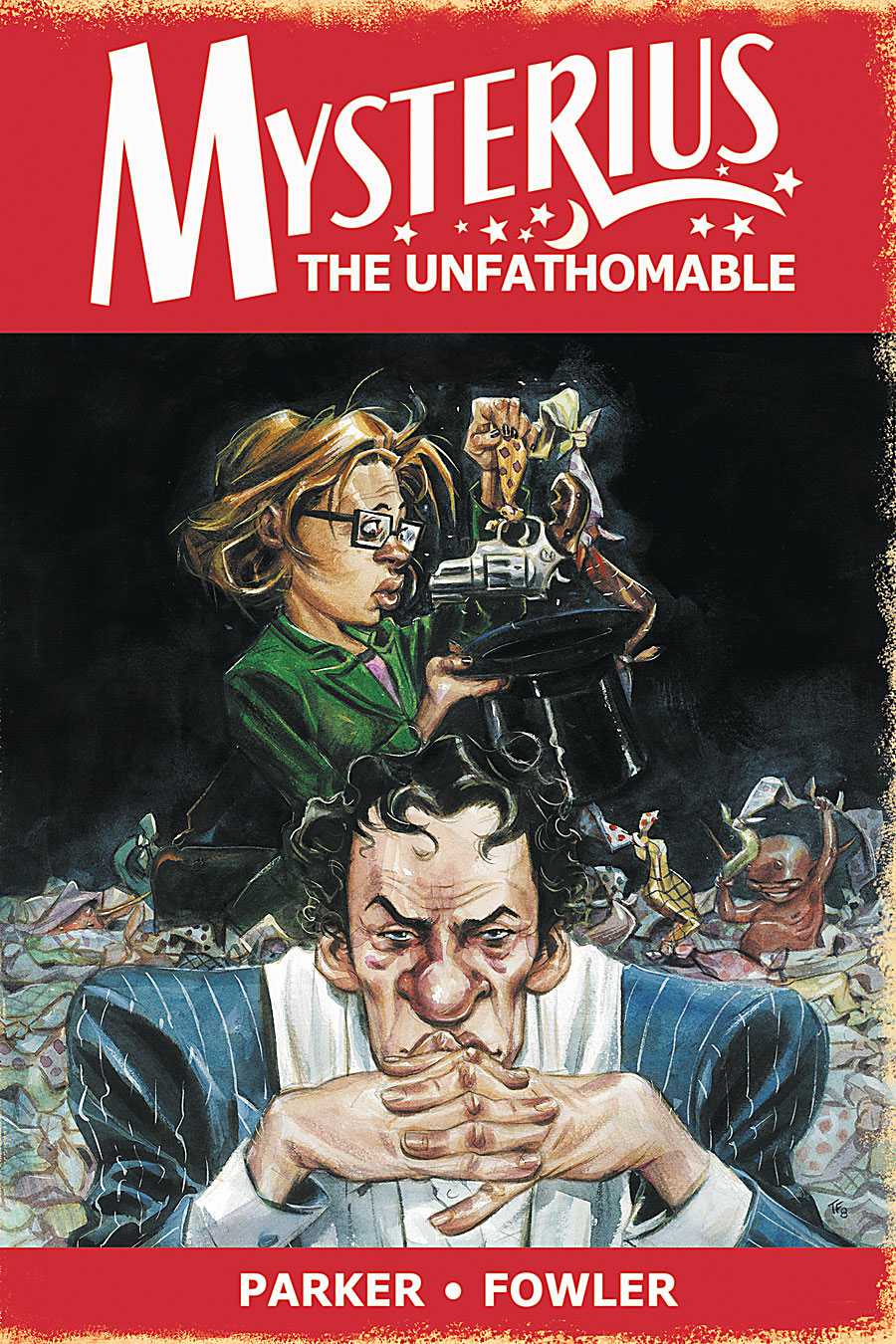Mysterius The Unfathomable #1–6 by Jeff Parker and Tom Fowler
This is an oddly charming creator-owned series published by Wildstorm in 2008 about a selfish mystic/magician/magical expert called Mysterius. We meet him when he finds his new ‘Delfi’ – Delfi is the name he gives all his assistants – at a séance that goes awry when the circuit is broken and he loses his client in the other dimension (although he does get him back eventually). His new assistant is a young black woman who follows him because she saw what was going on at the séance. Because of this, Mysterius decides she should become his new assistant (causing her to lose her job as a journalist in order to acquire her for the position), so we get to ‘meet’ him through her eyes – he’s been around for years, hiding in plain sight as a mystic, with his Pullman coach attached to a passenger train and his Mysterium (a sort of sanctum sanctorum) and his ability to move through doorways into other places far away.
The first case they have is a wealthy man who develops a rash of tattoos on his body of the names of the prostitutes he has used, which is an embarrassment in case his wife finds out. He is an auctioneer who turned down the sale of an arcane object due to insufficient funds; it turns out that the buyer was a witch (hence the skin curse) who used paper enchanted to look like cash for the deposit but didn’t have any money in a bank for the payment. Naturally, there is a link to Mysterius’s past – Vinton Du Lac, the first openly practising Satanist, with whom Mysterius had a run-in in the 1960s (shown in flashback). And, as Mysterius says, there are no coincidences … Meanwhile, the man who suffered at the séance has started to see devils in the children’s books of Doctor Gaust: Mysterius recognises the names in the books as the names of Elder Demons, disguised in the form of nonsense poetry, but with the same meter and rhythm as pre-Sumerian spirit chants. This means that the demons can enter this dimension, so Mysterius and Delfi have to enter their dimension (in which everything is day-glow and the dialogue is all in rhyme). There they find Gaust, who deliberately wrote the books so that he could achieve power, and who wants to keep Mysterius and Delfi captive. They escape but only into the hands of the witch who cursed their original client, who is working for Du Lac. He is becoming a god and needs other magicians out of the way; trapped in a burning man with the magicians, it’s at this point that Delfi snaps when she realises how selfish her new boss is and quits, which leaves a lot to finish in the final issue, but Parker does in style.
This is a packed and fast-moving comic book – the panels are dense with story and information, and the narrative doesn’t hang around. It’s a story which has to set up its own universe quickly and efficiently, which is impressive for a world based on magic – stories about magic can be problematic due to the lack of rules and structure, but this book manages the trick (if you’ll pardon the pun). Parker and Fowler have created a lead character who isn’t necessarily likeable yet he tries to do the right thing despite himself. The art plays a big part in the appeal of the book and the character by being suitably quirky. Fowler is an excellent storyteller – the panel are set in a real world despite the oddness, and his transitions and camera angles move the story along at the same pace as the script. He also draws individuals, people who are instantly recognisable from their body shape and different faces – all the characters look like themselves and nobody else. Mysterius has a bulbous nose and a thin body shape but with a noticeable pot belly, not the way ‘heroes’ are usually portrayed. He also draws weirdness well – the other dimensions and the Elder Demons and the creatures used by Du Lac. It’s cartoony but with a dirty edge to it – I was reminded of the strange body proportions of Larry Stroman with a European style plus a soupcon of Brendan MacCarthy for good measure. A very enjoyable book indeed.




